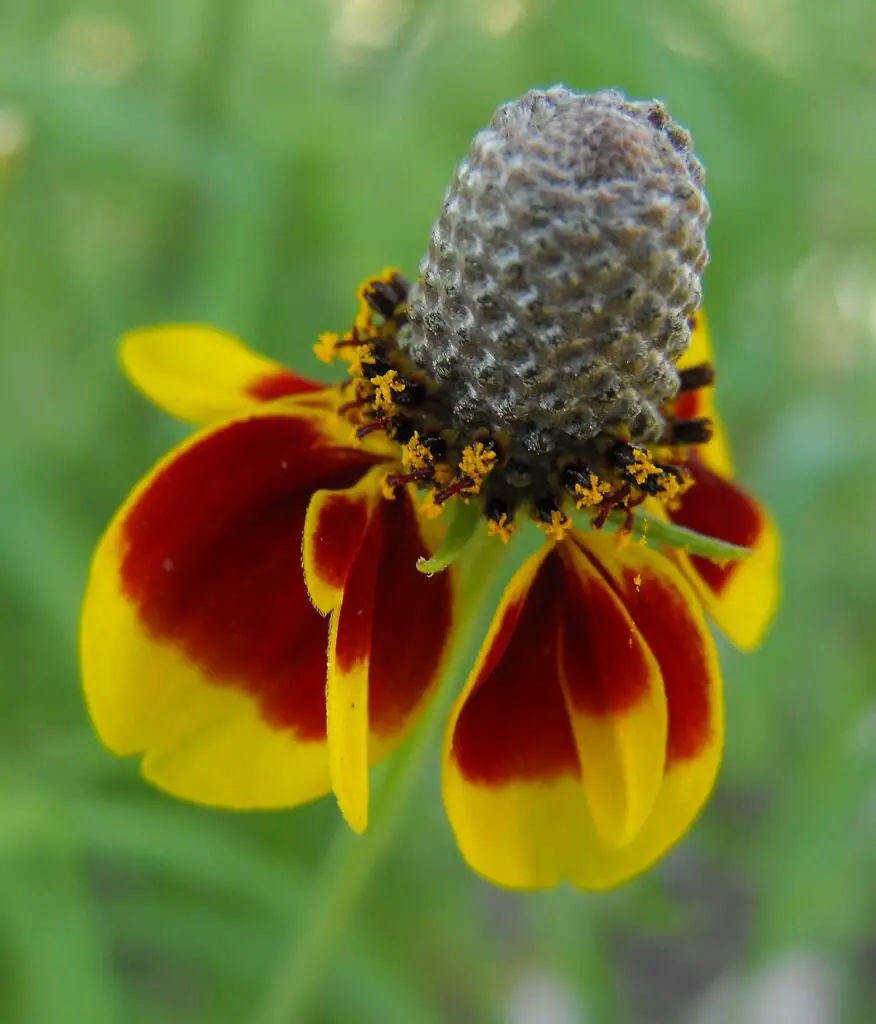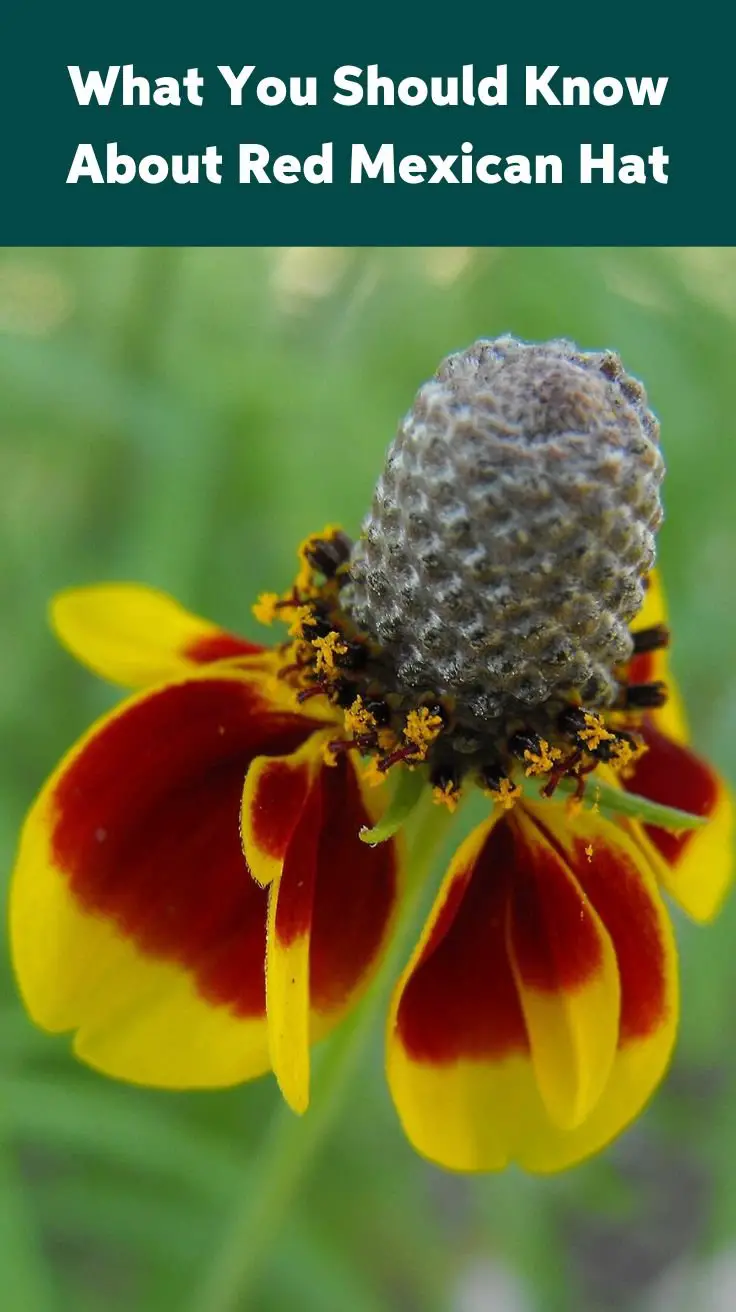The Red Mexican Hat (Ratibida columnifera) is a vibrant wildflower native to North American prairies, known for its distinctive sombrero-shaped blooms featuring deep red petals that droop around a tall, dark center cone. This drought-tolerant perennial has become increasingly popular in sustainable landscaping and butterfly gardens, offering both ecological benefits and striking visual appeal.
Understanding the Red Mexican Hat Flower
As a native plant specialist with years of experience cultivating prairie species, I can tell you that the Red Mexican Hat is one of our most charismatic native flowers. Also known as Prairie Coneflower or Mexican Hat Plant, this hardy perennial gets its playful name from its distinctive appearance – drooping red petals surrounding a tall center cone that resembles a traditional Mexican sombrero.

Key Characteristics
- Height: Typically grows 2-3 feet tall
- Bloom Time: Late spring through early fall
- Color: Deep red petals with dark brown/purple center cone
- Native Range: Central and Eastern North America
- Scientific Name: Ratibida columnifera
- Family: Asteraceae (Sunflower family)
Growing Red Mexican Hat Plants
Ideal Growing Conditions
- Sunlight: Full sun (6-8 hours daily)
- Soil: Well-draining, tolerates poor soils
- Water: Drought-tolerant once established
- USDA Hardiness: Zones 4-9
- Spacing: 12-18 inches apart
Planting Tips
The best time to plant Red Mexican Hat is in spring after the last frost. According to the National Gardening Association, follow these steps:
- Choose a sunny location with good drainage
- Prepare soil by loosening to about 12 inches deep
- Plant seeds 1/4 inch deep
- Keep soil consistently moist until germination
- Thin seedlings to 12-18 inches apart
Benefits and Uses
Wildlife Benefits
Red Mexican Hat flowers are valuable for:
- Attracting butterflies and bees
- Supporting native pollinators
- Providing seeds for birds
- Creating habitat for beneficial insects
Landscape Applications
- Prairie gardens
- Butterfly gardens
- Xeriscaping
- Meadow plantings
- Border gardens
- Natural areas
Care and Maintenance
Seasonal Care
Spring:
- Clean up dead foliage
- Divide established plants if needed
- Plant new specimens
Summer:
- Deadhead spent blooms to encourage more flowers
- Water during extreme drought
- Monitor for pests
Fall:
- Leave some seedheads for birds
- Cut back if desired
- Collect seeds for next season
Winter:
- Leave plant structure for winter interest
- Provide mulch in colder regions
Common Problems and Solutions
- Powdery Mildew:
- Improve air circulation
- Avoid overhead watering
- Remove affected foliage
- Root Rot:
- Ensure proper drainage
- Avoid overwatering
- Amend heavy soils with organic matter
Cultural Significance
The Red Mexican Hat has historical significance in Native American culture, where it was used for:
- Traditional medicines
- Ceremonial purposes
- Natural dyes
- Prairie restoration
Companion Planting
Red Mexican Hat pairs beautifully with other prairie natives such as:
- Black-Eyed Susan
- Purple Coneflower
- Little Bluestem Grass
- Blazing Star
- Butterfly Weed
Conservation and Ecological Impact
As native prairie habitats continue to decline, growing Red Mexican Hat helps:
- Preserve native plant species
- Support local ecosystems
- Reduce water usage in landscapes
- Provide food for wildlife
Tips for Success
- Start with healthy plants or fresh seeds
- Plant in groups for best visual impact
- Be patient – plants may take time to establish
- Allow for natural reseeding
- Embrace their informal, naturalistic appearance
FAQ’s
Q: How long does it take to bloom from seed?
A: Plants typically bloom in their first year if planted in spring.
Q: Do deer eat Red Mexican Hat?
A: These plants are generally deer-resistant due to their texture and taste.
Q: Can I grow them in containers?
A: Yes, but ensure good drainage and adequate room for root development.
Conclusion
The Red Mexican Hat flower is more than just a pretty face in the garden – it’s a resilient native plant that offers significant ecological benefits while requiring minimal care. Whether you’re creating a butterfly garden, practicing water-wise landscaping, or simply want to add some prairie charm to your landscape, this remarkable plant deserves a place in your garden.
Remember to check with your local Cooperative Extension Service for specific growing recommendations in your area, as conditions can vary by region. By incorporating these native beauties into your landscape, you’re not just creating a beautiful garden – you’re also supporting local ecosystems and preserving our natural heritage.

